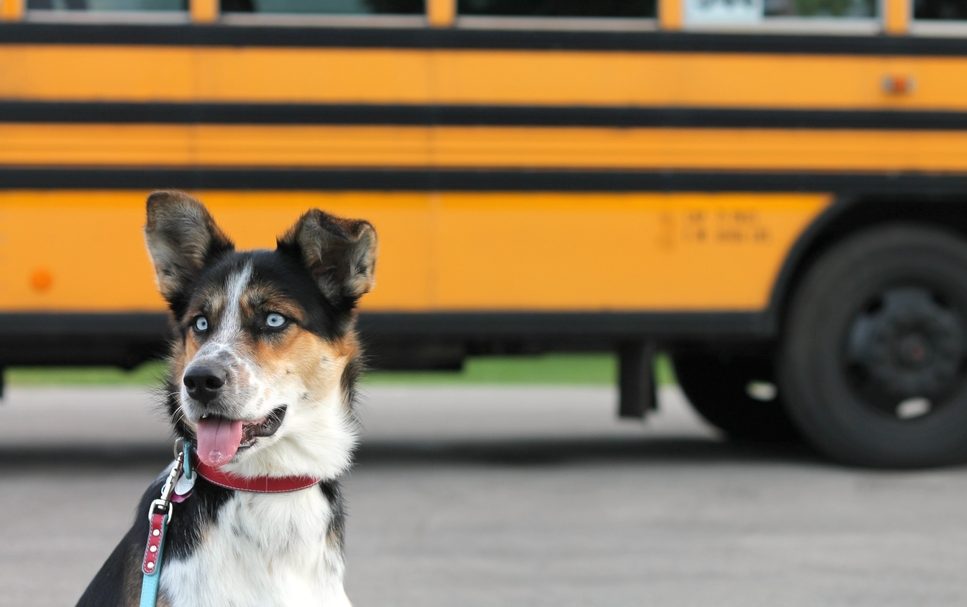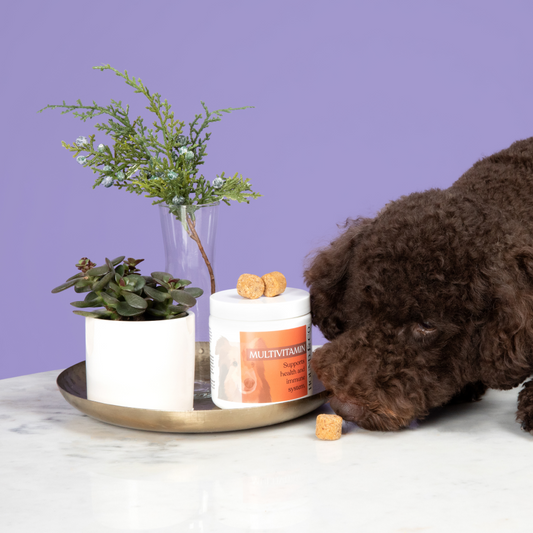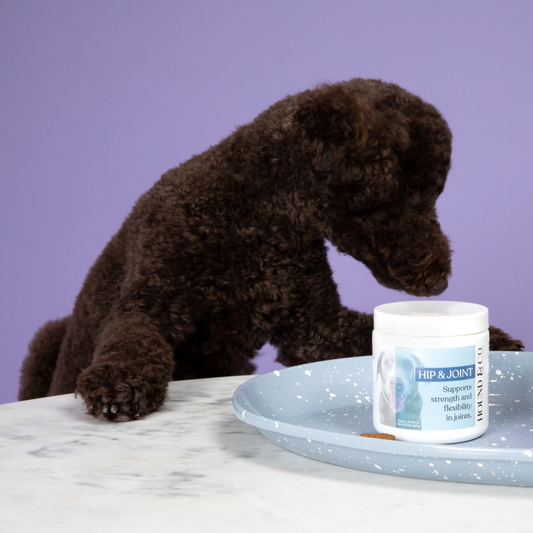Helping Your Dog Adjust to Back-to-School Schedule Changes

Vet Reviewed by Dr. Jacob Klos, DVM

The back-to-school season is an exciting time for families, but it can also be a period of significant change for your dog. As your routine shifts, your dog may experience confusion, anxiety, or boredom. Fortunately, with a little planning and patience, you can help your dog adjust to these new changes smoothly.
Understand the Impact of Schedule Changes on Dogs
Dogs are creatures of habit, and they thrive on routine. When the household’s schedule changes suddenly, such as when kids return to school after summer break, it can leave your dog feeling disoriented and stressed. Your dog may miss the constant attention and playtime they enjoyed during the summer and could become anxious when the house is suddenly quieter during the day.
This change in routine can manifest in various ways, such as increased barking, destructive behavior, or even changes in appetite. Your dog might also follow you around more than usual or display signs of separation anxiety. Understanding these behaviors as a response to the change in routine can help you address the issue with empathy and appropriate strategies.
Additionally, it’s important to remember that dogs are sensitive to the emotions of their human family members. If your children are anxious or excited about going back to school, your dog may pick up on these emotions and feel more unsettled as a result. This is why maintaining a calm and reassuring demeanor can be beneficial during this transition period.
By recognizing the potential impact of schedule changes on your dog, you can proactively take steps to ease their anxiety and help them adapt to the new routine. This sets the foundation for a smoother transition and helps your dog feel more secure in their environment.
Gradually Introduce the New Routine
One of the best ways to help your dog adjust to the back-to-school schedule is to start introducing changes gradually. A week or two before school starts, begin altering your dog’s routine to match the upcoming schedule. This might include shifting mealtimes, adjusting the timing of walks, and gradually reducing the amount of time spent with your dog during the day.
For example, if your dog is used to having breakfast at 8 AM but will need to eat at 7 AM once school starts, begin feeding them at 7:45 AM, then 7:30 AM, and so on, until they are comfortable with the new time. The same approach can be applied to walks and playtime. Gradually shifting these activities can help your dog become accustomed to the new routine without feeling overwhelmed by sudden changes.
It’s also helpful to create a morning routine that closely mirrors the school day schedule. This might involve waking up at the same time each day, going for a quick walk, and then having a quiet period where your dog can rest as the household prepares for the day. Consistency in the morning routine can help your dog feel more secure, even when the rest of the day’s activities change.
By making these adjustments gradually, you give your dog the time they need to adapt to the new schedule. This approach reduces the likelihood of anxiety or behavioral issues arising from the sudden absence of family members during the day.
Create a Safe and Engaging Environment
During the school day, your dog will likely spend more time alone. To prevent boredom and anxiety, ensure they have a safe and engaging environment. Provide your dog with toys that stimulate their mind, such as puzzle toys or treat-dispensing toys. You can also leave out some of their favorite items, like a cozy bed or blanket, to create a comfortable and reassuring space.
Interactive toys can be particularly beneficial in keeping your dog occupied. Puzzle toys that dispense treats or kibble can provide mental stimulation and help alleviate boredom. Additionally, rotating your dog’s toys every few days can keep them interested and engaged, as the novelty of new toys or toys they haven’t seen in a while can provide a refreshing distraction.
Consider using calming aids, such as dog-safe essential oils or pheromone diffusers, to create a peaceful environment. These products can help reduce anxiety and create a calming atmosphere for your dog while they’re home alone. If your dog tends to get anxious when left alone, consider leaving the radio or television on at a low volume to provide some background noise and make the house feel less empty.
Finally, ensure that your dog’s environment is physically safe. Remove any potential hazards, such as small objects they could swallow, and secure areas where they shouldn’t go. Providing a designated safe space, like a crate or a specific room, can also help your dog feel more secure when they’re alone.
Incorporate Quality Time Before and After School
While the school day may be busy, it’s important to carve out quality time for your dog before and after school. A morning walk can help burn off energy and reduce anxiety, while an evening play session or cuddle time can reinforce your bond and give your dog something to look forward to each day.
Morning walks are especially beneficial because they provide physical exercise and mental stimulation, setting a positive tone for the rest of the day. During the walk, allow your dog to explore their environment, sniff around, and interact with other dogs if possible. This not only tires them out physically but also mentally, making them more likely to relax and rest during the day.
In the evening, consider setting aside time for a fun activity that your dog enjoys, whether it’s playing fetch, engaging in a training session, or simply relaxing together. This dedicated time helps reinforce your bond with your dog and provides them with the attention they crave after a day of being alone.
Remember that consistency is key. Try to maintain a regular schedule for walks and playtime so that your dog knows when to expect these activities. This predictability can help reduce anxiety and give your dog a sense of stability, even when the household routine changes.
Consider Professional Help if Needed
If your dog shows signs of severe anxiety, such as destructive behavior, excessive barking, or changes in eating habits, you may want to consult with a veterinarian or a professional dog behaviorist. They can offer strategies to help manage your dog’s anxiety and recommend products or training techniques that can provide additional support.
Behavioral issues that arise from anxiety can sometimes be complex, and addressing them early can prevent the behavior from becoming ingrained. A professional behaviorist can help identify the underlying causes of your dog’s anxiety and develop a customized plan to address it. This may include behavior modification techniques, environmental changes, and possibly the use of calming products or medications.
Your veterinarian can also provide valuable insights into managing your dog’s anxiety. They can assess whether your dog’s anxiety might be related to a medical condition and recommend appropriate treatments. In some cases, your veterinarian may suggest a combination of behavior modification and medication to help your dog cope with the changes more effectively.
By seeking professional help, you can ensure that your dog receives the support they need to adjust to the new schedule. This proactive approach can prevent anxiety from escalating and help your dog feel more secure and comfortable during the transition.
Be Patient and Consistent
Adjusting to a new schedule can take time, so be patient with your dog as they adapt. Consistency is key—try to maintain a predictable routine, and offer plenty of positive reinforcement when your dog shows signs of adjusting well. With your support, your dog will soon get used to the new normal.
Patience is crucial during this transition period. Your dog may need time to adjust to the changes, and it’s important to be understanding and supportive. Avoid scolding or punishing your dog if they exhibit anxiety-related behaviors, as this can increase their stress. Instead, focus on positive reinforcement, rewarding your dog for calm and appropriate behavior.
Consistency in your approach is also important. Try to keep daily routines as predictable as possible, even if other aspects of the household schedule change. This consistency helps your dog feel secure and reduces the likelihood of anxiety or behavioral issues.
Finally, remember that every dog is different, and the time it takes for them to adjust to a new schedule can vary. Some dogs may adapt quickly, while others may need more time and support. By being patient, consistent, and attentive to your dog’s needs, you can help them navigate the back-to-school transition with confidence.
By following these tips, you can help ease your dog into the back-to-school transition, ensuring they remain happy, healthy, and secure during this time of change.









